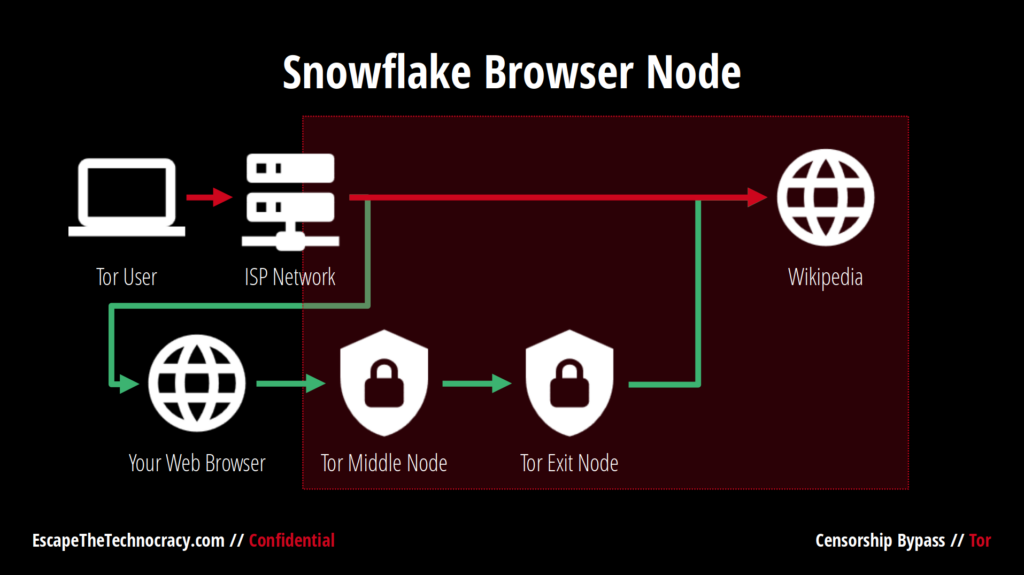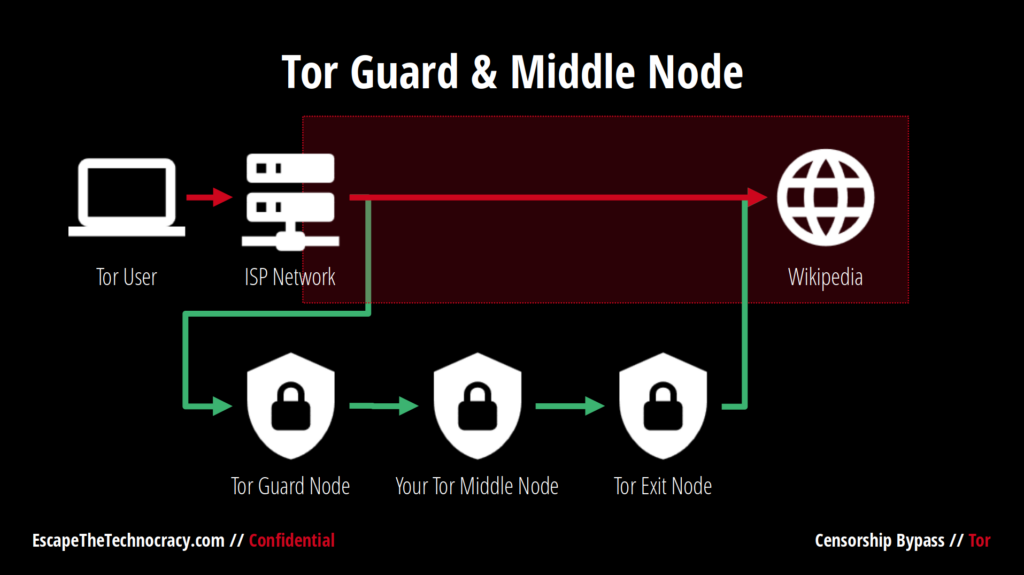Tor is a free overlay network for enabling anonymous communication and bypassing censorship. It relies on volunteers to run around seven thousand relays worldwide. There are various types of relays, and your choice depends on your hardware (particularly your router) and available bandwidth. We’ll guide you through setting up a hidden relay, from the simplest to the most advanced options, so you can choose the best one for you. Hidden relays are useful to help people bypass censorship.
We have made an entire course on how to run a Tor Relay.
This course can be accessed for free on our Digital Market and contains much more detail.
// Overview
| relay type | requirements | considerations | how easy is it to run it? |
|---|---|---|---|
| snowflake | ⚫︎ Any computer with an Internet browser (Firefox, Chrome, Etc). ⚫︎ Can work behind a VPN | Snowflake relays will share the bandwidth of your browser with one Tor user. Those nodes do not require a dedicated machine. | easy |
| standalone snowflake | ⚫︎ A dedicated server (any Linux computer / laptop with 4Gb of ram) ⚫︎ Can work behind a VPN | Same as snowflake but run continuously. If you are running one of the Bitcoin node-in-a-box e.g: Umbrel, etc you can simply install it as an app. | easy to middle, in some cases requires some command line |
| bridge | ⚫︎ A dedicated server (any Linux computer / laptop with 4Gb of ram) ⚫︎ An medium level network router and access to the admin panel to open ports ⚫︎ 24/7 Internet connectivity with at least 1 Mbit/s of upstream and downstream bandwidth ⚫︎ Cannot work behind a VPN | Bridge are hidden Tor nodes used by people who cannot access directly the Tor network. Their purpose is similar to snowflake nodes but are faster and more powerful. They can serve many users and have higher bandwidth requirements. | middle, requires some command line and admin access to your router |
// Snowflake (Web Browser Nodes or Standalone Nodes)


Snowflakes nodes are perfect for beginners. They do not require any special hardware. You just need to install the browser extension for your web browser. The bandwidth used will not be very high since only one person at the time will be able to use your proxy. Snowflakes nodes also works behind VPN and are only active when you use your web browser.
- For Chrome based browsers
- For Firefox based browsers
- If you just want to try it to see how it works, just visit this website: https://relay.love/
- But for maximum effectiveness its recommended to install the extension
Standalone snowflakes nodes use the same principle but run as a standalone application instead of a browser extension. This has the added benefit of running 24/7 instead of just when the web browser is open. It is best to have it running on a server (can be an old laptop, an old computer or even a raspberry pi). If you have an existing Bitcoin node like Umbrel it is very easy to install like any other applications. It will not take much resources, so that should not be a problem.
- Umbrel Store (Check your own node app store)
- The official documentation for standalone node (If you want to manually install it and run it on a server)
// OBFS4 Bridge Nodes


People with higher bandwidth usage and slightly more powerful internet routers can easily run an OBFS4 bridge. They are identical to regular Tor nodes with the exception of their details not being published online. Because they are hidden, this makes it impossible for an adversary to discover them without investing significant resources. They require less bandwidth than regular Tor nodes but more than Snowflake nodes.
- Full tutorial on how to run one can be found on the official Tor website
- Make sure to access the admin panel of your router to open the relevant port and if you are using a VPN at the router level that you disable it for the node
- Some routers might already have trouble, not with the bandwidth but the amount of connections (around 100+)
- In most case this should not be an issue but be mindful of it.
- Most ISP technical supports are not familiar with such scenario (a lot of very low bandwidth connections)
- They might have a hard time to debug it
- If you are running behind a metered connection make sure to set some traffic limits
- To give you an idea a descent bridge can easily relay around 1Tb of traffic per month if not more
Tips: A server is simply a computer running 24/7. If you are “afraid” of the command line we recommend installing a Linux distribution with a GUI. This will make it easier to debug and troubleshoot eventual problems.



